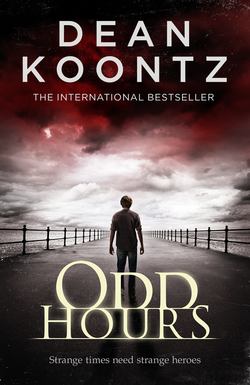Читать книгу Odd Hours - Dean Koontz, Dean Koontz - Страница 10
CHAPTER 4
ОглавлениеWhile I dithered at the intersection of support beams, a pale form loomed out of the south, to my right.
Because occasionally spirits manifest suddenly, unexpectedly, with no regard for my nerves, I don’t startle easily. I swayed on the timber but did not plummet from it.
My visitor proved to be Boo, good dog and former mascot of St. Bartholomew’s Abbey in the California Sierra.
He could be seen by no one but me, and no touch but mine could detect any substance to him. Yet to my eyes at least, the shimmering reflections sprayed up by the rolling sea played off his flanks and across his face, as if he were as solid as I was.
Although he could have appeared in midair, he walked the crossbeam toward me, like the ghost of Hamlet’s father approaching the doomed prince on the platform before the castle.
Well, no. Boo had a tail, soft fur, and a friendly smile. Hamlet’s father had none of that, although Hollywood would no doubt eventually give him all three in some misguided adaptation.
I hoped that the Hamlet comparison was inappropriate in other ways. At the end of that play, the stage is littered with dead bodies.
Boo stopped when he knew that I had seen him, cocked his head, and wagged his tail. Suddenly facing away from me without having turned around, he padded south, paused, glanced back at me, and then continued.
Even if I had not watched a lot of old episodes of Lassie, I understood the dead well enough to know that I was expected to follow my dog. I took some small pride that, unlike young Timmy in the TV show, I didn’t need to be barked into obedience.
The blond hulk had not appeared in the east, nor the redheads in the west, so I hurried, if gingerly, after the ghostly shepherd, who led me toward the south side of the pier.
At the end of the timber path, I came to a large railed landing that served two flights of ascending stairs, one to the left, one to the right. The landing might have been a staging platform for workers of one kind or another.
When Boo climbed the stairs to the left, I went after him. The flight was short, and at the top lay a four-foot-wide railed catwalk.
The underside of the pier deck hung little more than one foot above my head. In this high corridor, where only a storm wind could have stirred the air, the stink of creosote thickened.
Darkness pooled deeper here than elsewhere. Nevertheless, the quivering marbled reflections, ever-changing on the ceiling, revealed electrical conduits, junction boxes, and copper pipes that must have been water lines.
The conduits brought power to the lampposts topside and to the emergency floodlamps below me. The copper lines served the freshwater faucets provided at regular intervals for the anglers who, on most nights, fished from the pier.
This catwalk, along which Boo led me, would be used by plumbers and electricians when problems arose with pier utilities.
After we had proceeded some distance shoreward, we came to a two-foot-by-five-foot pop-out in the catwalk. A wooden storage chest with two padlocks filled this space.
In the poor light, I could not see any words or markings on the chest. Perhaps it contained maintenance supplies.
Or interred in the chest might have been the shrunken remains of the pier master’s poor wife, Lorraine, who perhaps had been murdered twenty years ago when she complained once too often about a lingering creosote smell in his work clothes.
My eager imagination might have worked up a hair-raising image of Lorraine’s shriveled cadaver, pickled in creosote, if I had been able to believe there was actually such a position as a pier master. I don’t know where the name Lorraine came from.
Sometimes I am a mystery to myself.
Boo settled on the catwalk and rolled onto his side. He extended one paw toward me and raked the air—universal canine sign language that meant Sit down, stay awhile, keep me company, rub my tummy.
With three dangerous men searching for me, a tummy-rub session seemed ill-advised, like pausing in midflight across a howitzer-hammered battlefield to assume the lotus position and engage in some yoga to calm the nerves.
Then I realized that the brute in the orchid-pattern shirt was overdue for an appearance as he searched the support structure from east to west. The storage chest stood about two and a half feet high and offered cover that the open railing did not.
“Good boy,” I whispered.
Boo’s tail beat against the floor without making a sound.
I stretched out on the catwalk, on my side, left arm bent at the elbow, head resting on my palm. With my right hand, I rubbed my ghost dog’s tummy.
Dogs know we need to give affection as much as they need to receive it. They were the first therapists; they’ve been in practice for thousands of years.
After perhaps two minutes, Boo brought an end to our therapy session by rolling to his feet, ears pricked, alert.
I dared to raise my head above the storage chest. I peered down seven feet into the level of the support structure from which I had recently ascended.
At first I saw no one. Then I spotted the hulk proceeding along the series of east-west beams.
The eddying water far below cast luminous patterns that turned through the support structure like the prismatic rays from a rotating crystal chandelier in a ballroom. The hulk had no one to dance with, but he didn’t appear to be in a dancing mood, anyway.
